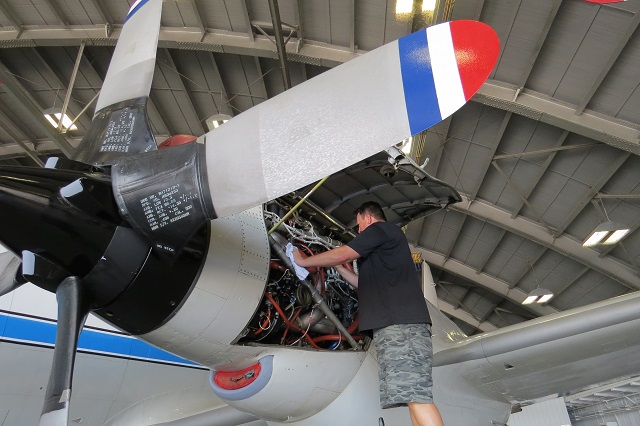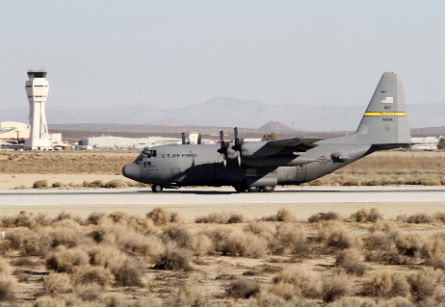The US National Oceanic and Atmospheric Administration (NOAA) has validated the performance of the Rolls-Royce T56 Series 3.5 turboprop engine enhancement on its WP-3D Orion “hurricane hunter” in a 3h flight from MacDill Air Force Base in Tampa, Florida, last week.
According to Tom Hartmann, senior VP of customer business for Rolls-Royce North America, the flight demonstrated a fuel savings of “a little better than 12%”, exceeding the minimum 7.9% guarantee. The aircraft climbed to an altitude of 30,000ft, whereas the aircraft normally operates at about 21,000ft to collect hurricane weather data over the Gulf of Mexico and Caribbean Sea.
The flight data is another arrow in Rolls-Royce’s quiver as it pitches the Series 3.5 upgrade to P-3 Orion and C-130H operators internationally and domestically in the US. The company has been pressing Congress to fund an upgrade programme for an air national guard or reserve C-130 fleet.
“This gives us great data from an operating customer to show the fuel savings and the performance benefits,” Hartmann says. “NOAA is going to use this aircraft in this year’s hurricane hunting season, and once the season’s over we’ll have a second aircraft that gets refitted with [the Series 3.5 kit] to be ready for next year’s season.”

The first aircraft with the four improved engines is conducting its final shakedown flights and will likely be called into service “as soon as the next hurricane pops up on the radar screen”. More flight data will become available as those operational flights take place, but R-R says it now has enough flight data to properly validate the enhanced performance.
The US Air Force is drawing down its C-130H fleet as newer C-130Js are delivered, but the H-model and several earlier configurations powered by the T56 are expected to remain in service for many more years. There are more than 200 air force C-130Hs in service, and Hartmann says there are about double that number in the global fleet as well as many P-3 maritime patrol aircraft.
R-R teams will be attending various C-130 and P-3 operator conferences in the coming year in search of sales. “We’re looking forward to using this success and the performance benefits they are clearly seeing to blacken the skies with 3.5,” Hartmann says.

The upgrade is a depot-level repair that takes about 30 to 45 days to install. It involves compressor and turbine blade swaps and improvements to the engine’s aerodynamics and fuel control. The technology is derived from Rolls’ newer common core engines including the 1107 (V-22), 2100 (C-130J and C-27J) and 3007 (Global Hawk) as well as earlier upgrade packages.
The T56 Series 3.5 kit is currently in “very low rate production” for NOAA, the launch customer.
R-R acquired the original T56 manufacturer Allison in 1995 and the modification was first trialled on an air force C-130 in 2012.

Source: FlightGlobal.com



















